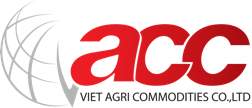MYCOTOXINS: THE INVISIBLE RISKS IN ANIMAL FEED
Mycotoxins are toxic substances produced by fungi, and there are over 300 different types identified. In animal feed, the primary mycotoxins of concern include aflatoxins and ochratoxins from Aspergillus fungi, zearalenone and fumonisins from Fusarium fungi, and citrinin from Penicillium fungi.
Globally, mycotoxin contamination is a significant issue. Over 25% of cereals around the world are affected by these toxins, with 80-100% of corn in the U.S. being contaminated by Fusarium toxins. In China, cereals like corn and rice are frequently contaminated by multiple types of mycotoxins.
Mycotoxins pose serious risks to both animal and human health. They cause abnormal biochemical changes in the body by interfering with RNA and protein synthesis, leading to early cell death, weakened immune systems, and even cancer.

Among these, aflatoxins are especially dangerous. They have high toxicity, disrupt liver cells and functions, and can potentially cause cancer. Symptoms of aflatoxin exposure are often noticeable in pigs and chickens, including loss of appetite, jaundice, motor dysfunction, diarrhea, stunted growth, and increased mortality.
Due to their high toxicity, China enforces strict standards on the allowable levels of fungi in raw materials. For instance, cereals and cereal products must have a total fungal count of less than 40,000 per gram, while fishmeal from meat and bone must be below 20,000 per gram. Common mycotoxins in stored products include aflatoxin, ochratoxin A, T-2 toxin, DON (vomitoxin), zearalenone, fumonisins, and citrinin.
To manage mycotoxin risks, several strategies are employed, including preventing contamination from raw materials, inhibiting growth during storage, detoxifying with chemical methods, and using adsorbents for removal. While mycotoxins may be an invisible threat, they pose serious risks and can significantly impact profitability in animal husbandry. Rigorous prevention and control measures are essential to ensure feed quality and safeguard animal health.



 (028) 35 129 364
(028) 35 129 364 hello@viet-acc.com
hello@viet-acc.com